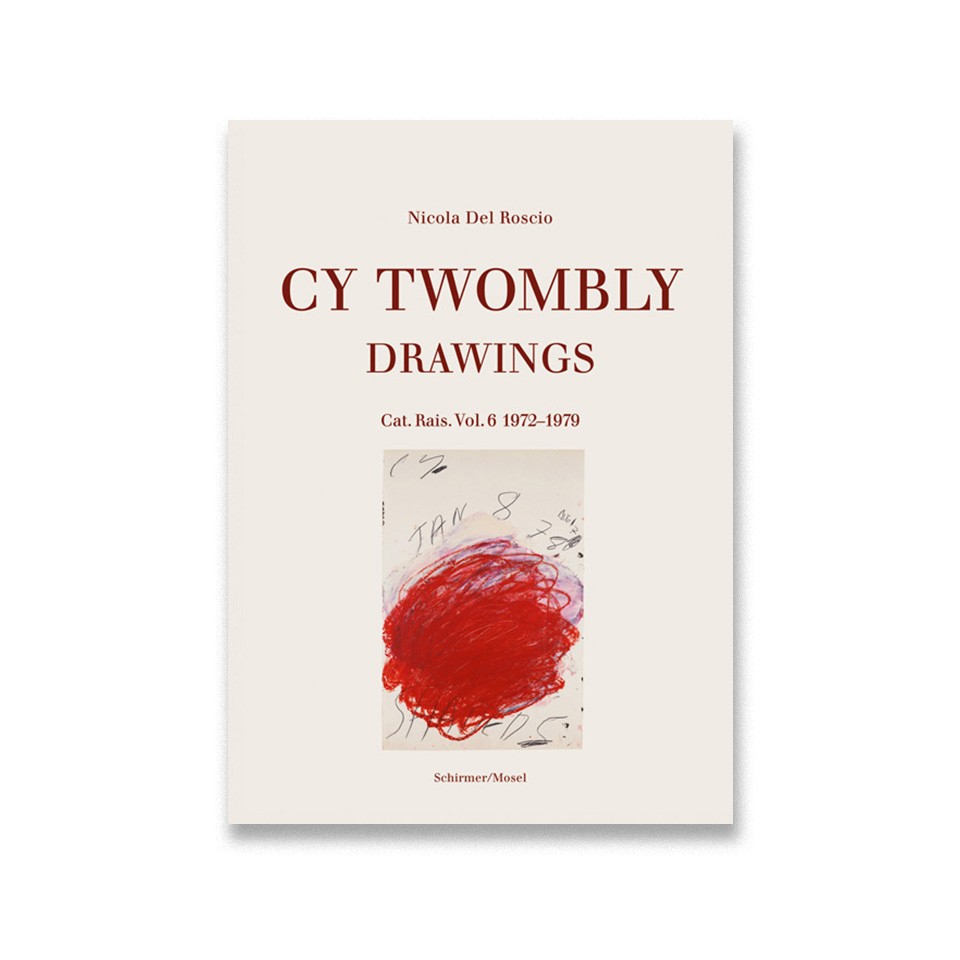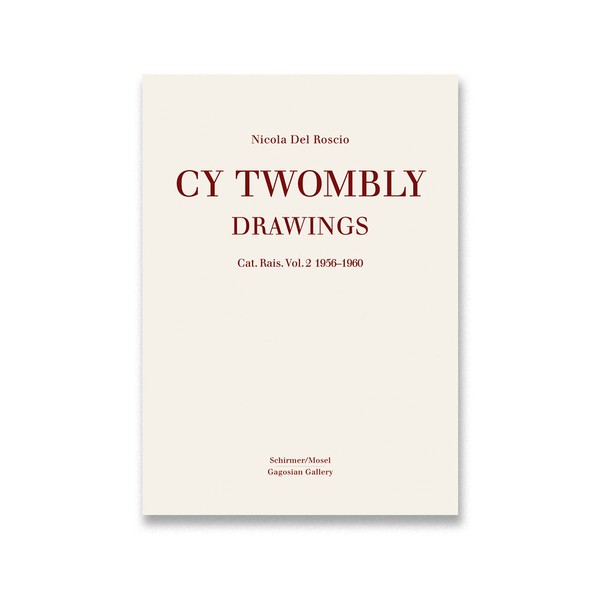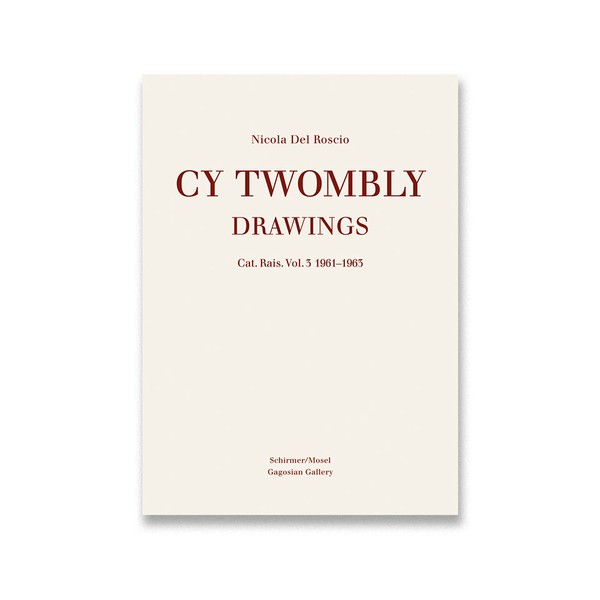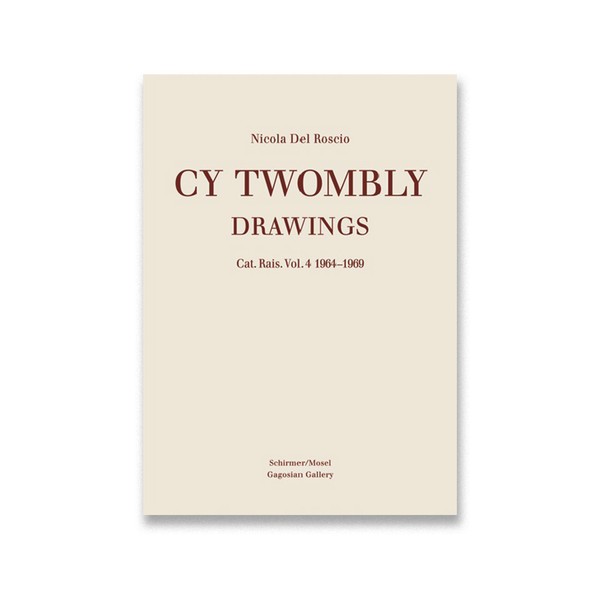Cy Twombly
Catalogue Raisonné of Drawings
Volume 6, 1972–1979

Cy Twombly Catalogue Raisonné of Drawings Vol. 6 spans 1972 to 1979 and includes many of the most frequently exhibited and researched works on paper. Nicola Del Roscio’s introductory essay, titled simply “1972–1979,” describes amusing responses by art collectors and curators to Twombly’s work during this period, as well as experiences with art fairs and the film industry. Del Roscio also describes the artist’s first encounters with various figures who played important roles in his later professional life, including Heiner Bastian, Yvon Lambert, and Roland Barthes.
The drawings likely to be of interest to researchers are too many to name, but major thematic concerns include Virgil; Aristaeus mourning the loss of his bees; authors such as Paul Valéry, John Keats, Rainer Maria Rilke, Vladimir Tatlin, Kazimir Malevich, Percy Bysshe Shelley, and Stéphane Mallarmé; Sesostris; Orpheus, Dionysus, and Narcissus; Venus, Mars, and Apollo (also in combination with “the Artist”); Shelley’s “Adonais”; Edmund Spenser (especially his Faerie Queene and Epithamalion); Thyrsis and pastoral idylls; Sappho; Pan; Plato (especially the Symposium, Republic, and Phaedrus); and Homeric “shades”. Many interpersonal connections are also recorded via inscriptions or dedications in this set of works, including (in order of appearance) to Betty di Robilant, Tatiana Franchetti, Bob Peterson, Nicola Del Roscio, Alessandro Twombly, Patrizia Sperone, and Reiner Speck. There are also many series of works on repeated themes: e.g., Virgil (1973), Turn and Coda (1973), Gladings (Love’s Infinite Causes) (1973), and 24 Short Pieces (1973). Many of his works on paper from this period are distinctly nature-oriented, including untitled collages from Rome that include mushrooms and pages from natural history books and in Laura in Italy (1976) and Idilli (1976). These works are likewise useful for those focused on relationships between the drawings and the printed graphic works; the aforementioned works share direct connections to his Natural History Part I: Mushrooms (1974) and Natural History Part II Some Trees of Italy (1975–76), both of which appear in Heiner Bastian’s Catalogue Raisonné: The Printed Graphic Work.
There is extensive literature related to the works included in this volume; especially useful is the Musée de Grenoble’s catalogue Cy Twombly: Œuvres sur papier 1973–1977 (2023) as it focuses exclusively on works falling within this period. Twombly and Poussin: Arcadian Painters, ed. Nicholas Cullinan (2011) includes discussion of Aristaeus, Apollo, and Pan. Fifty Days at Iliam, ed. Carlos Basualdo (2018) addresses Shades of Night (1977), which immediately precedes the eponymous painting cycle, as well as Apollonian themes. Dominique Baqué’s Cy Twombly: Sous le signe d’Apollon et de Dionysos (2016) takes up artworks from this period that address Apollo, Venus, Virgil, Sesostris, Adonais, and Dionysus. Cycles and Seasons, ed. Nicholas Serota (2008) addresses thematic concerns with Mars and Apollo. Cy Twombly: Making Past Present, ed. Christine Kondeleon and Kate Nesin (2020) reproduces and includes discussion of many of the works concerning Virgil, Apollo, Venus, and Plato.
(Publication description by Jamie Danis)
Cy Twombly Catalogue Raisonné of Drawings Volume 6 1972–1979. Edited by Nicola Del Roscio. Munich: Schirmer/Mosel, 2016. Fully illustrated. English edition.



